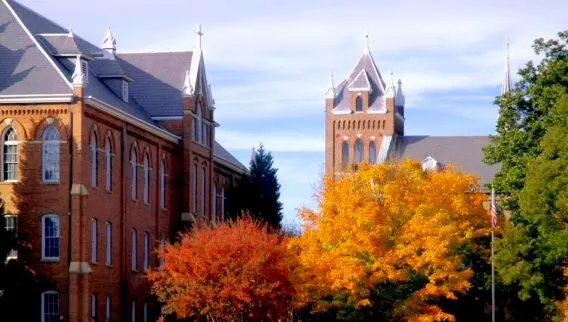
What Is a Community College? A Complete Guide for Students in the U.S. & Abroad
Quick Answer: A community college is a two-year postsecondary institution that offers affordable, flexible, and career-oriented education—primarily through associate degrees, diplomas, and certificate programs. In the U.S., community colleges serve as a gateway to four-year universities or direct employment, with lower tuition costs and open admission policies. For international students, they provide a budget-friendly path to American higher education. This complete guide explores how community colleges work, their pros and cons, application process, costs, and how they compare globally—helping students make an informed academic choice.
Are you confused about what a community college is or how it's different from a university? Whether you're a high school student, a parent, or an international learner considering higher education in the United States or India, this guide will walk you through everything you need to know about community colleges—with real examples, comparisons, pros and cons, course options, costs, and more.

1. Community College Defined
A community college is a publicly funded, two-year institution that serves the educational needs of its surrounding region. Unlike four-year universities, community colleges focus on:
- Associate degrees (Associate of Arts, Associate of Science, Associate of Applied Science)
- Professional certificates and diplomas in vocational or technical fields
- Transfer pathways that allow you to move seamlessly into a bachelor’s program at a four-year institution
The mission is simple: provide affordable, accessible, and practical education.
Relevant
Discrete Mathematics and Computer Science
2. Community Colleges in the United States
In the U.S., community colleges (sometimes called junior colleges or two-year colleges) are supported by state and local governments. Key characteristics include:
- Open-access admissions — minimal GPA or standardized-test requirements
- Flexible scheduling — day, evening, weekend, and online classes
- Smaller class sizes — more one-on-one interaction with instructors
- Local focus — programs tailored to regional workforce needs
More than 1,000 community colleges serve over 5 million students annually.
Relevant
How to Pass the TEAS Test Without Studying
3. Community College vs. University
| Feature | Community College | University |
|---|---|---|
| Program Length | 2 years (associate degree) | 4 years (bachelor’s degree) |
| Admissions | Open enrollment | Competitive (GPA, tests, essays) |
| Tuition (in-state) | ~$3,800 per year | ~$10,000–$12,000 per year |
| Class Size | 15–30 students | 50–300+ (lecture halls) |
| Campus Life | Limited clubs, no dorms | Extensive clubs, athletics, housing |
| Transfer Opportunities | Guaranteed transfer agreements | Not applicable |
◆Takeaway: Community college is often your most cost-effective, low-risk way to earn college credits before tackling a four-year degree.
4. Tuition and “Free” Community College
Community college isn’t universally free, but more states are making it possible:
| State | Program Name | Key Eligibility Criteria |
|---|---|---|
| California | College Promise | First-time, in-state, full-time students |
| Tennessee | Tennessee Promise | High-school graduates who apply before deadline |
| New York | Excelsior Scholarship | Income cap; full-time attendance |
| Oregon | Oregon Promise | Meet GPA and residency requirements |
| Nevada | Nevada Promise | Recent HS grads; full-time enrollment |
Even if you don’t qualify for a state program, you can often cover nearly 100% of costs through:
- Federal Pell Grants
- State and institutional scholarships
- Work-study programs
5. Examples of Community Colleges
Here are five community colleges known for strong academics and transfer success:
- Santa Monica College (CA)
- Northern Virginia Community College (VA)
- Valencia College (FL)
- Lone Star College (TX)
- Borough of Manhattan Community College (NY)
Each partners with local universities to guarantee transfer credit, so you won’t lose time or money when moving to a four-year school.
6. Course Offerings: What You Can Study
Community colleges cover two broad categories:
| Academic Transfer Programs | Career & Technical Training |
|---|---|
| Liberal Arts & Sciences | Nursing & Health Sciences |
| Business Administration | Information Technology & Cybersecurity |
| Mathematics & Natural Sciences | Automotive Technology |
| Social Sciences & Education | Culinary Arts |
| Humanities & Fine Arts | Welding, HVAC, Construction Trades |
Many colleges also offer dual-enrollment (high-school students earn college credits) and adult education (GED prep, English as a Second Language).
7. Pros and Cons: Making an Informed Choice
| Pros | Cons |
|---|---|
| Significantly lower tuition | Limited campus life |
| Flexible schedules for working students | Fewer extracurricular activities |
| Smaller classes, more personal support | Some credits may not transfer to all universities |
| Strong career-technical programs | No on-campus housing in most cases |
| Smooth transfer agreements | Less research and internship opportunities on campus |
8. Community Colleges in India
India’s University Grants Commission (UGC) launched the Community College Scheme in 2013. These colleges:
- Offer skill-based diplomas and certificates
- Align programs with National Skill Development Corporation (NSDC) standards
- Primarily focus on vocational training
However, they remain less widespread and less integrated than U.S. community colleges.
9. How to Find a Community College Near You
- College Navigator (nces.ed.gov)
- Google search for “community college near me”
- State higher-education websites
- Guidance counselors at your high school
Filter by program type, cost, transfer agreements, and online vs. on-campus options.
10. Frequently Asked Questions
What is a community college in the United States?
A two-year public institution offering associate degrees, certificates, and transfer pathways to four-year universities.
Is community college free in the USA?
Not by default, but many states have “promise” or scholarship programs that cover full tuition for eligible students. Pell Grants and institutional aid can also offset costs.
What is an example of a community college?
Santa Monica College in California, Valencia College in Florida, and Northern Virginia Community College are among the top-ranked.
What community college courses can I take?
You can study academic disciplines (math, sciences, humanities) for transfer or career-ready programs like nursing, IT, automotive tech, culinary arts, and more.
Is community college bad?
No—community college is a cost-effective, flexible option that serves millions of students. It’s a strong choice for reducing debt, exploring careers, or easing into higher education.
Conclusion
Community colleges represent an affordable, accessible bridge between high school, vocational training, and four-year universities. Whether your goal is to jump-start a new career, explore academic interests, or transfer seamlessly into a bachelor’s program, community college can be the strategic first step you need. Take a look at your local options, check eligibility for tuition assistance, and consider a community college as a smart investment in your future.
